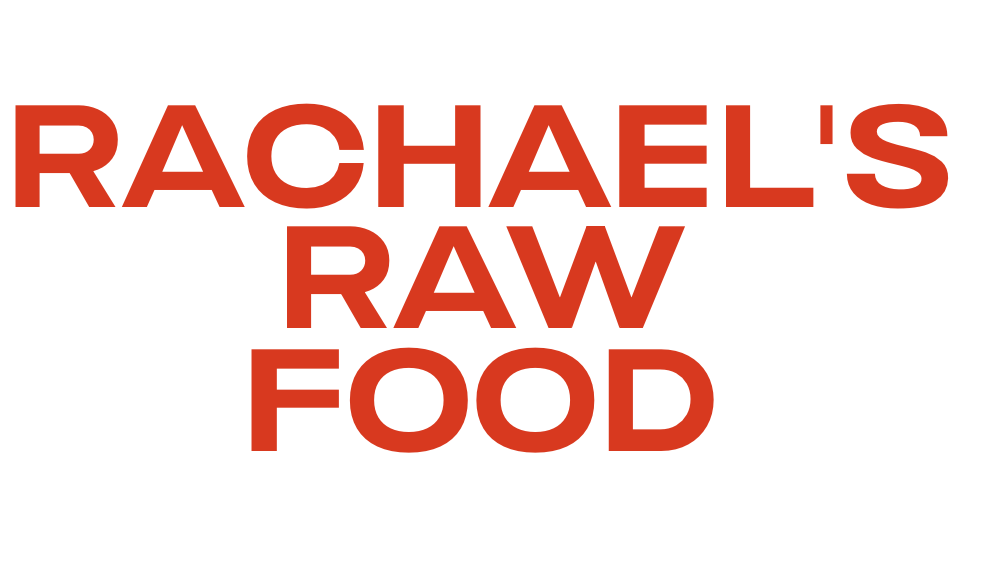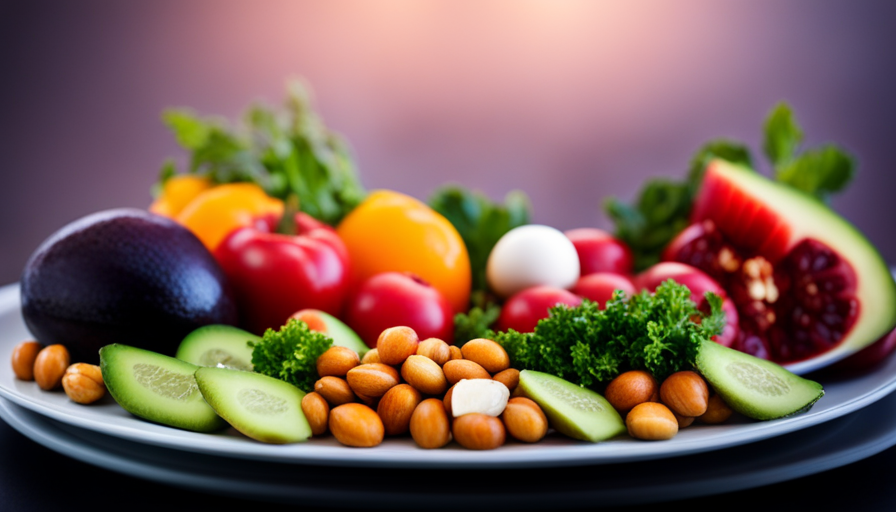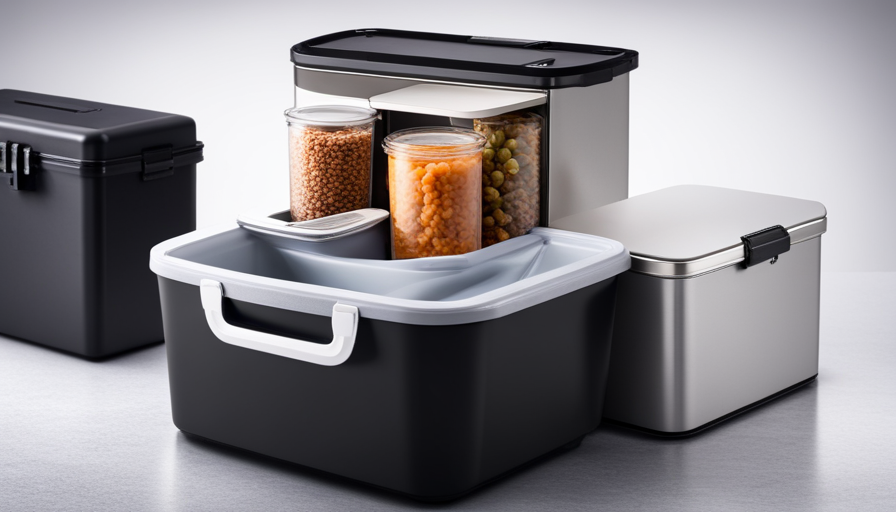Are you tired of not knowing what’s in your pet’s food? Do you want to make homemade meals for your furry friend to ensure they are getting the best nutrition possible? You’re in luck! This article will guide you on where to find raw materials for pet food so you can make sure your beloved pet is getting the nourishment they deserve.
By making your own pet food, you have the power to choose high-quality ingredients that meet your pet’s specific nutritional needs. Whether you have a dog or a cat, it is essential to provide them with a balanced diet that includes all the necessary proteins, vitamins, and minerals.
To start, we will walk you through the process of identifying your pet’s nutritional needs and help you locate local farms, farmers markets, butchers, and meat suppliers who can provide you with fresh, raw ingredients.
Additionally, we will explore online suppliers that offer a wide variety of raw ingredients for your convenience.
Stay tuned as we delve into the world of homemade pet food and discover the many benefits it can bring to your furry friend’s health and happiness.
Key Takeaways
- Consult a veterinarian and research reputable sources to identify your pet’s nutritional needs.
- Source quality ingredients by reading labels on commercial pet food products and considering homemade options with a balance of protein, carbohydrates, and healthy fats.
- Locate local farms and farmers markets to support your pet’s health, the environment, and the local economy.
- Connect with butchers and meat suppliers to ensure the quality of ingredients in your pet’s food.
Benefits of Making Homemade Pet Food
Making homemade pet food has numerous benefits, such as improving your furry friend’s overall health and well-being. When you prepare your pet’s meals at home, you have full control over the ingredients you use. This means you can ensure that your pet receives a balanced and nutritious diet. Many commercial pet foods contain fillers, artificial additives, and low-quality ingredients that can be harmful to your pet’s health. By making homemade pet food, you can avoid these potentially harmful ingredients.
Another benefit of homemade pet food is that it can be tailored to your pet’s specific dietary needs. Some pets may have food allergies or sensitivities, and commercial pet foods may not cater to these individual needs. By preparing their meals at home, you can carefully select ingredients that are suitable for your pet’s unique needs.
Furthermore, homemade pet food can also be more flavorful and appetizing for your furry friend. You can incorporate a variety of fresh ingredients, such as lean meats, vegetables, and whole grains, which provide essential nutrients and vitamins. This can lead to improved digestion, increased energy levels, and a healthier coat.
The benefits of making homemade pet food are clear. By taking the time to prepare meals at home, you can ensure that your pet receives a nutritious and balanced diet, tailored to their specific needs. This can lead to improved overall health and well-being for your beloved furry friend.
Identifying Nutritional Needs for Your Pet
Contrary to popular belief, it’s quite surprising how often we overlook the importance of understanding our furry friends’ nutritional requirements. Just like humans, pets have specific nutritional needs that must be met in order to maintain optimal health.
To ensure that you are providing the best diet for your pet, it is crucial to identify their nutritional needs and source quality ingredients.
Identifying nutritional needs:
- Consult your veterinarian: They can provide valuable insight into your pet’s specific dietary requirements based on their age, breed, size, and any existing health conditions.
- Research reputable sources: Look for reliable information from trusted sources such as veterinary publications or pet nutritionists to gain a better understanding of the essential nutrients your pet needs.
Sourcing quality ingredients:
- Read labels: Carefully examine the ingredient list on commercial pet food products to ensure they contain high-quality, recognizable ingredients.
- Consider homemade options: Making your own pet food gives you complete control over the ingredients. Be sure to include a balance of protein, carbohydrates, and healthy fats.
Remember, providing a nutritious diet is essential for your pet’s overall well-being. By identifying their nutritional needs and sourcing quality ingredients, you can ensure that they’re getting the best possible diet to support their health and happiness.
Locating Local Farms and Farmers Markets
When it comes to ensuring the highest quality for your furry friend’s diet, you can easily locate local farms and farmers markets where you can discover a wide array of fresh, locally-sourced options.
Locating organic options and supporting local agriculture not only benefits your pet’s health, but also the environment and local economy.
By choosing to buy from local farms and farmers markets, you can have peace of mind knowing that the ingredients in your pet’s food are sourced from nearby. This means they’re likely to be fresher and more nutrient-rich compared to mass-produced options that may have traveled long distances before reaching store shelves.
When you support local agriculture, you contribute to the preservation of farmland in your community. This helps maintain a sustainable and diverse food system for both humans and animals. Additionally, buying from local farms allows you to establish a direct connection with the farmers who grow the ingredients for your pet’s food. You can ask questions about their farming practices and ensure that they align with your pet’s dietary needs and preferences.
To locate local farms and farmers markets, you can start by checking online directories or using mobile apps that specialize in connecting consumers with local producers. You can also ask for recommendations from other pet owners or visit your nearest agricultural extension office for information on nearby farms and markets.
Choosing to locate local farms and farmers markets for your pet’s food not only provides you with organic options but also supports local agriculture. It’s a win-win situation for both your furry friend’s health and the community.
Connecting with Butchers and Meat Suppliers
Supporting local butchers and meat suppliers enables you to establish a personal connection with the people who provide the nourishing proteins for your furry companion, fostering a sense of trust and community. By connecting with local suppliers, you not only ensure the quality of the ingredients in your pet’s food but also contribute to the local economy.
Here are some tips for finding ethical sources:
-
Take the time to research and identify local butchers and meat suppliers in your area. Look for those who prioritize animal welfare and sustainable farming practices.
-
Visit the butcher shop or meat supplier in person. This allows you to see firsthand how they handle and store their products. Look for cleanliness and organization, as these are indicators of a reputable supplier.
-
Ask questions about the origin of the meat and the farming practices used. Ethical suppliers will be transparent and proud to share information about their sources.
By connecting with local suppliers and finding ethical sources, you can have peace of mind knowing that the raw ingredients in your pet’s food are of the highest quality. Plus, you’ll be supporting local businesses and fostering a stronger sense of community.
Exploring Online Suppliers for Raw Ingredients
If you’re looking to up your furry friend’s nutrition game, checking out online suppliers for top-notch, high-quality ingredients is a paw-some option! When exploring online suppliers for raw ingredients, it’s essential to do your research and read online reviews to ensure you’re getting the best products for your pet.
Online reviews can provide valuable insights into the quality and reliability of the supplier, giving you peace of mind when making your purchase. Additionally, comparing prices is crucial when shopping for raw ingredients online. Different suppliers may offer varying prices for the same product, so it’s essential to compare and find the best deal.
Take the time to browse through different websites, noting the prices offered for the ingredients you’re looking for. Don’t forget to consider factors like shipping costs and discounts offered by the supplier. By comparing prices, you can find the most cost-effective option without compromising on the quality of the ingredients.
Online suppliers can be a convenient and reliable source for raw ingredients for your pet’s food. By utilizing online reviews and comparing prices, you can ensure that you’re providing your furry friend with the highest quality ingredients while staying within your budget. So go ahead, do your research, and find the perfect online supplier to take your pet’s nutrition to the next level!
Understanding Food Safety and Handling
Now that you’ve explored online suppliers for raw ingredients, it’s important to understand the significance of food safety and proper handling techniques when it comes to preparing pet food.
Just like human food, pet food must adhere to certain food safety standards to ensure the health and well-being of our furry friends.
Food safety standards for pet food involve guidelines and regulations that aim to prevent contamination and maintain the nutritional value of the ingredients. This includes proper storage, handling, and preparation of raw ingredients. It’s crucial to handle raw ingredients with care to minimize the risk of bacterial growth or cross-contamination.
When handling raw ingredients for pet food, it’s essential to wash your hands thoroughly before and after handling. Additionally, separate cutting boards and utensils should be used specifically for pet food preparation to avoid the transfer of harmful bacteria to human food. Raw ingredients should be stored at the appropriate temperature to prevent spoilage and maintain freshness.
By following these food safety standards and proper handling techniques, you can ensure that your pet’s food is safe and nutritious. Remember, the health and well-being of our furry friends depend on us, and providing them with safe and healthy food is a crucial part of responsible pet ownership.
Choosing the Right Proteins for Your Pet
When it comes to selecting the perfect proteins for your furry friend, it’s important to consider their dietary needs and preferences. Choosing alternative proteins can provide a variety of benefits for your pet, including reducing the risk of food allergies and sensitivities.
Here are some key factors to keep in mind when considering protein options for your pet:
-
Fish: Fish is an excellent source of protein for pets, especially those with allergies to common protein sources like chicken or beef. It’s also rich in omega-3 fatty acids, which can support your pet’s skin and coat health.
-
Lamb: Lamb is a great option for pets with sensitive stomachs or allergies. It’s easily digestible and provides essential amino acids that are necessary for their overall health.
-
Turkey: Turkey is a lean protein source that can help maintain your pet’s muscle mass. It’s also a good option for pets with food allergies or sensitivities.
-
Duck: Duck is a novel protein source, making it a suitable option for pets with food allergies. It’s also rich in iron and provides essential nutrients for your pet’s well-being.
-
Venison: Venison is a lean and highly digestible protein source. It’s a good option for pets with food allergies or sensitivities, as it’s not commonly found in commercial pet foods.
Understanding protein requirements is crucial in providing a balanced diet for your pet. Consult with your veterinarian to ensure you’re meeting their specific dietary needs.
Incorporating Fruits and Vegetables into Their Diet
Incorporating fruits and vegetables into your furry friend’s diet can provide them with essential vitamins and minerals they need for optimal health. When it comes to choosing the right fruits and vegetables for your pet, it’s important to consider incorporating frozen options.
Frozen fruits and vegetables are a convenient choice, as they’re often picked at the peak of freshness and then quickly frozen, preserving their nutritional value. Plus, frozen options can be a cost-effective way to provide your pet with a variety of fruits and vegetables throughout the year.
When it comes to finding organic options, it’s important to look for pet food brands that prioritize using organic ingredients. Organic fruits and vegetables are grown without the use of synthetic pesticides, fertilizers, or GMOs. By choosing organic options, you can ensure that your pet is getting the best quality produce without any potentially harmful chemicals.
To incorporate fruits and vegetables into your pet’s diet, you can start by adding small amounts to their regular meals and gradually increasing the portion size. Some popular options include blueberries, carrots, spinach, and sweet potatoes. Just be sure to avoid feeding your pet any fruits or vegetables that are toxic to them, such as grapes, onions, or avocados.
Overall, incorporating fruits and vegetables into your pet’s diet can provide them with a wide range of health benefits. By choosing frozen and organic options, you can ensure that your furry friend is getting the best nutrition possible.
Adding Essential Supplements for Balanced Nutrition
To ensure your furry friend gets a balanced diet, don’t forget to add essential supplements that’ll give them a nutritional boost beyond their wildest dreams.
While incorporating fruits and vegetables into your pet’s diet is important, it’s equally crucial to address any nutrient deficiencies that may arise. Just like humans, pets can also suffer from imbalances in their diet, which can lead to various health issues.
One essential supplement that’s often recommended for pets is omega-3 fatty acids. These fatty acids help promote healthy skin and coat, reduce inflammation, and support brain and joint health. Fish oil is a common source of omega-3 fatty acids for pets.
Another important supplement is probiotics, which can aid in digestion and support a healthy gut. Probiotics can help improve nutrient absorption and strengthen the immune system.
Additionally, certain vitamins and minerals are essential for your pet’s overall well-being. These include vitamin D, vitamin E, calcium, and iron. Ensuring that your pet receives these nutrients in adequate amounts can help prevent nutrient deficiencies and promote optimal health.
Adding essential supplements to your pet’s diet is crucial for maintaining a balanced diet and preventing nutrient deficiencies. Consult with your veterinarian to determine the specific supplements that’re appropriate for your pet’s individual needs.
Providing your furry friend with the necessary nutrients will contribute to their overall health and happiness.
Meal Prepping and Storage Tips
Make meal prepping and storing your pet’s nutritionally balanced meals a breeze with these helpful tips. When it comes to meal prepping for your pet, there are a few key tips to keep in mind.
First, make sure to plan out your pet’s meals in advance. This will not only save you time but also ensure that your pet is getting all the necessary nutrients. Consider using a meal prep calendar or app to help you stay organized.
Next, invest in high-quality storage containers that are airtight and freezer-safe. This will help keep your pet’s meals fresh and prevent any freezer burn. Additionally, label each container with the date and contents to easily keep track of what you have on hand.
When it comes to portioning out your pet’s meals, consider using silicone ice cube trays or muffin tins. These can be a convenient way to control portion sizes and make it easier to thaw individual servings.
Lastly, be sure to thaw your pet’s meals in the refrigerator rather than on the counter. This will help prevent the growth of harmful bacteria. And remember, always wash your hands and any utensils or surfaces that come into contact with your pet’s food to maintain proper hygiene. With these meal prepping tips and storage hacks, you can ensure that your pet’s meals are always fresh and nutritious.
Frequently Asked Questions
What are the potential risks and drawbacks of making homemade pet food?
When making homemade pet food, there are potential health risks and drawbacks to consider. One major concern is the potential for nutritional deficiencies. Without proper knowledge and guidance, it can be challenging to ensure that your pet’s diet is balanced and meets all their nutritional needs.
Additionally, there is a risk of contamination or improper handling of raw ingredients, which can lead to foodborne illnesses. It’s crucial to consult with a veterinarian or animal nutritionist to create a well-rounded and safe homemade pet food plan.
How can I ensure that the raw ingredients I find are of high quality and safe for my pet?
To ensure pet food safety and evaluate ingredient sources, there are a few key steps you can take. Firstly, research reputable suppliers who prioritize quality and transparency. Look for certifications like AAFCO, which ensures that the food meets specific nutritional standards.
Additionally, examine the ingredient list carefully, avoiding any artificial additives or fillers. Lastly, consider consulting with a veterinarian or pet nutritionist to ensure that the ingredients you choose will meet your pet’s specific dietary needs.
Are there any specific guidelines or recommendations for portion sizes when feeding homemade pet food?
When it comes to portion control and nutritional balance in homemade pet food, there are some guidelines you can follow. It’s important to consult with a veterinarian to determine the appropriate portion sizes for your pet based on their breed, age, weight, and activity level.
Additionally, ensure that the homemade pet food contains a proper balance of proteins, carbohydrates, and fats to meet your pet’s nutritional needs. Following these guidelines will help keep your pet healthy and satisfied.
Can I use frozen fruits and vegetables in my pet’s homemade diet?
Frozen fruits and vegetables can be a convenient and nutritious addition to your pet’s homemade diet. While some may argue that fresh is always best, frozen produce often retains more nutrients due to being picked at peak ripeness and quickly frozen. Canned fruits and vegetables, however, may have added sugars or preservatives that are not ideal for pets. To ensure the best quality, opt for frozen options and always check labels for any additives.
Are there any common mistakes or pitfalls to avoid when meal prepping and storing homemade pet food?
When it comes to meal prepping and storing homemade pet food, there are a few common mistakes and pitfalls to avoid. First, make sure to properly balance the nutrients in your pet’s diet to avoid deficiencies or excesses.
Additionally, be cautious with the storage of homemade pet food, as improper storage can lead to bacterial growth and contamination.
Lastly, always follow safe food handling practices to ensure your pet’s health and well-being.
Can I Use the Raw Ingredients I Find for Pet Food to Prepare Meals Ahead of Time?
When it comes to feeding raw food pets ahead, it’s essential to use quality ingredients. Look for fresh, unprocessed items such as raw meat, bones, and organs. Be sure to research the nutritional requirements and potential risks associated with raw pet diets before preparing meals in advance.
Conclusion
In conclusion, by taking the time to find raw ingredients for your pet’s food, you’re ensuring they receive the best nutrition possible.
By exploring local farms, farmers markets, butchers, and online suppliers, you’ve access to a wide range of fresh, high-quality ingredients.
By incorporating a variety of proteins, fruits, and vegetables, you can create a well-balanced diet for your furry friend.
Don’t forget to add essential supplements for optimal health.
With proper meal prepping and storage, you can provide your pet with delicious and nutritious meals every day.
Start today and witness the vibrant health and happiness of your beloved pet.










